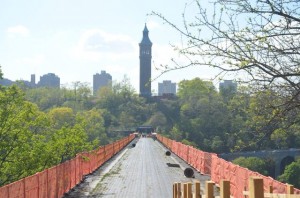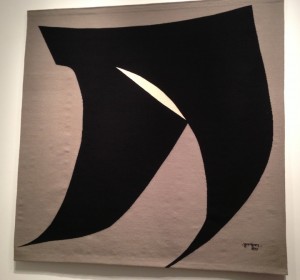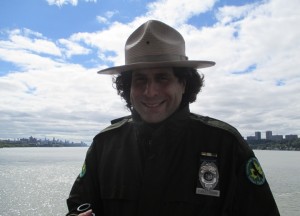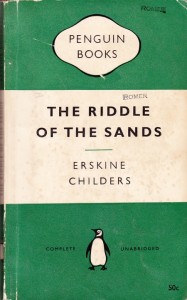 As noted in the above tweet for my #FridayReads a week ago, I was then enjoying the two excellent books named above. The first–The Riddle of the Sands, published in 1903–is arguably the first espionage thriller of the 20th century, though it’s written nothing like spy fiction is written today. It’s a heady and languorous narrative full of maritime adventuring set in the waters of the North Sea and its tidal rivers. The characters tumble in to some intrigue involving Britain and Germany, and the book fascinatingly anticipates many geopolitical issues that became even more pertinent to international relations in the following decades, during WWI and WWII. I used to stock and sell Childers’ book when I ran Undercover Books from 1978-85 as it was frequently assigned to high school students in the local school systems. This in itself is kind of amazing, because it is a complex, sophisticated book and I have a hard time imagining many high school students nowadays reading it, and getting through it. I think it’s also read often by sailors, mariners, and merchant seamen, for as the title suggests the characters are able to develop keen intuition for navigating the waters and the intrigue in to which they are plunged. Recently, Michael Dirda, one of the best book critics around, wrote a fascinating review of ‘Riddle’ in the BN Review which reminded me I had always meant to read the book. I found the second-hand Penguin edition pictured here, and have been relishing every new turn in the unfolding plot. I recommend you read Dirda’s review, even if you don’t have time right now for the book itself.
As noted in the above tweet for my #FridayReads a week ago, I was then enjoying the two excellent books named above. The first–The Riddle of the Sands, published in 1903–is arguably the first espionage thriller of the 20th century, though it’s written nothing like spy fiction is written today. It’s a heady and languorous narrative full of maritime adventuring set in the waters of the North Sea and its tidal rivers. The characters tumble in to some intrigue involving Britain and Germany, and the book fascinatingly anticipates many geopolitical issues that became even more pertinent to international relations in the following decades, during WWI and WWII. I used to stock and sell Childers’ book when I ran Undercover Books from 1978-85 as it was frequently assigned to high school students in the local school systems. This in itself is kind of amazing, because it is a complex, sophisticated book and I have a hard time imagining many high school students nowadays reading it, and getting through it. I think it’s also read often by sailors, mariners, and merchant seamen, for as the title suggests the characters are able to develop keen intuition for navigating the waters and the intrigue in to which they are plunged. Recently, Michael Dirda, one of the best book critics around, wrote a fascinating review of ‘Riddle’ in the BN Review which reminded me I had always meant to read the book. I found the second-hand Penguin edition pictured here, and have been relishing every new turn in the unfolding plot. I recommend you read Dirda’s review, even if you don’t have time right now for the book itself.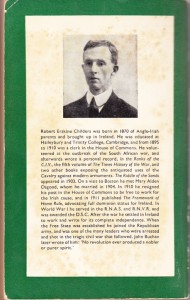
The other book, my nonfiction this week, is The Collaboration: Hollywood’s Pact with Hitler, by a young Australian scholar named Ben Urwand, a revelatory and controversial investigation into what he believes–based on documents and correspondence he found–was the close relationship, even alliance from the 1930s, and in at least one instance stretching in to the 1940s, between several US movie production companies and the Third Reich. I learned about the book in the summer, when the New York Times previewed the book, and I wrote about it then in a post titled Still More to Learn about Corporations’ Complicity with the Third Reich. I wrote then,
In 2000, while an editor at Crown Publishing, I acquired a book that later became an international sensation and a bestseller in the US. It was IBM and the Holocaust: The Strategic Alliance Between Nazi Germany and America’s Most Powerful Corporation by Edwin Black. I believed it was imperative that the book be published because it documented hitherto unknown revelations such as the fact that IBM’s punch card tabulation system was licensed to the Third Reich which then used the technology to catalog and keep track of Jews and others under its rule they deemed undesirables. Turned out that corporate complicity with Hitler was as American as cherry pie.
I want to add that later, in 2006, I edited and published another book in this area, Ibsen and Hitler: The Playwright, the Plagiarist, and the Plot for the Third Reich, in which scholar Steven F. Sage put forth a startling thesis, that long before the Final Solution, Adolf Hitler’s crimes included a kind of theft of intellectual property. The author marshaled lots of evidence to to show that a trio of plays by Henrik Ibsen (1828-1906) had provided Hitler with the script for his hegemonic career. With egotism and braggadocio, he saw himself as the star of a historical drama that mimicked Ibsen’s works. Sage showed that baffling incidents, including poor strategic choices, became understandable as part of a connected plot. He also traces ties between Hitler and a literary cult that warped Ibsen’s humanistic vision to suit their fascist designs, elevating Hitler as their anointed instrument. Sage’s book, and now Urwand’s, point to Hitler’s obsession with narrative drama, whether on the stage or on the silver screen. Both authors document Hitler’s propensity to repeatedly view the same theatrical and cinematic presentations. Sage writes that Hitler would see the same play over and over again, until he reached a point where he felt like he had in some sense become the drama’s hero. It’s striking that the two authors have, in this respect, developed similar theses. If you’re interested, I’ve pasted in the flap copy to Ibsen and Hitler at the bottom of this post which you may click on to read in full. 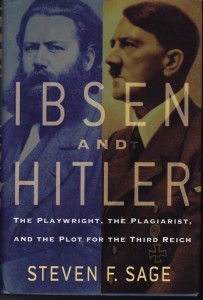
There’s already been a fair amount of criticism of Urwand, who is something of an unconventional scholar–he holds no teaching position, is a Junior Fellow of of the Society of Fellows at Harvard University, and has a background that includes being part of a successful rock n’ roll band, The Attachments. You can learn more about Urwand and his book here. The critics of the book have included David Denby in the New Yorker, who seems to take personal offense at the thesis, and claims there’s not much in the book we didn’t know already. I don’t share his jaded response and am eager to continue reading how and why executives likes Louis B. Mayer produced movies that they hoped would please the Third Reich and be shown to audiences in Germany.


 As some readers of this blog may know, I’ve had the personal and professional privilege to edit and publish photojournalist and author Ruth Gruber’s books over the years. I’ve done six of her eighteen books. Her first publication was a thesis on Virginia Woolf, written in Cologne, Germany in 1931, while an exchange student there. She was then just 20, a young woman from Brooklyn on the verge of what became an amazing career as a refugee advocate, chronicler of the displaced, humanitarian, and journalist. She met with Woolf in London around 1935, a story she’s told in her book Virginia Woolf: The Will to Create as a Woman, which I wrote about at this link on The Great Gray Bridge.
As some readers of this blog may know, I’ve had the personal and professional privilege to edit and publish photojournalist and author Ruth Gruber’s books over the years. I’ve done six of her eighteen books. Her first publication was a thesis on Virginia Woolf, written in Cologne, Germany in 1931, while an exchange student there. She was then just 20, a young woman from Brooklyn on the verge of what became an amazing career as a refugee advocate, chronicler of the displaced, humanitarian, and journalist. She met with Woolf in London around 1935, a story she’s told in her book Virginia Woolf: The Will to Create as a Woman, which I wrote about at this link on The Great Gray Bridge.








